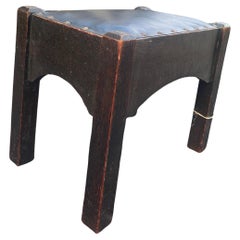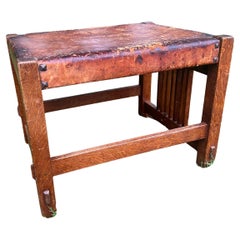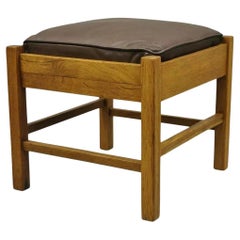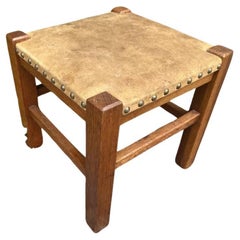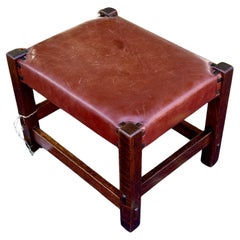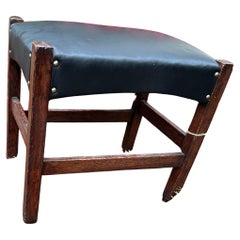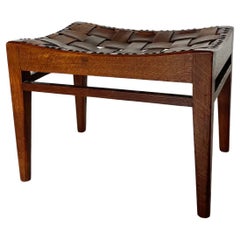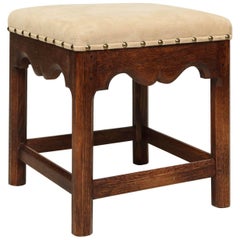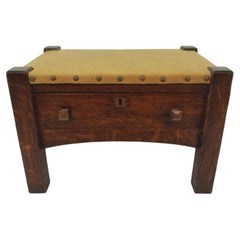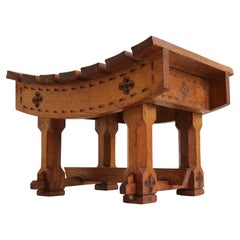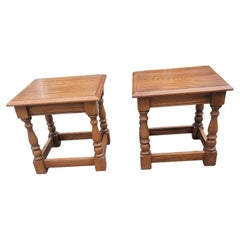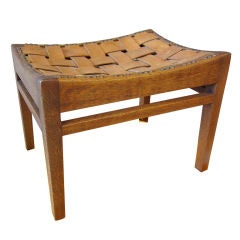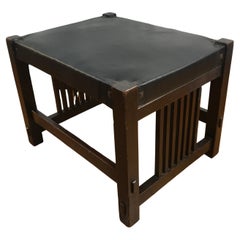Arts and Crafts Oak Footstools
Early 20th Century American Arts and Crafts Footstools
Leather, Cotton, Upholstery, Oak
Early 20th Century American Arts and Crafts Footstools
Leather, Upholstery, Oak
Mid-20th Century Unknown Arts and Crafts Footstools
Leather, Oak
Early 20th Century American Arts and Crafts Footstools
Leather, Oak
Antique Early 1900s American Arts and Crafts Footstools
Oak, Leather, Burlap
Vintage 1910s American Arts and Crafts Footstools
Leather, Cotton, Oak
Early 20th Century American Arts and Crafts Footstools
Leather, Cotton, Oak
Antique Early 1900s English Arts and Crafts Footstools
Leather, Oak
21st Century and Contemporary American Arts and Crafts Stools
Oak
Vintage 1910s American Arts and Crafts Footstools
Brass
Antique Early 1900s Dutch Arts and Crafts Footstools
Oak
Late 20th Century American Arts and Crafts Stools
Oak
20th Century English Arts and Crafts Stools
Bouclé, Oak
Antique Early 1900s English Arts and Crafts Stools
Leather, Oak
Recent Sales
Early 20th Century English Arts and Crafts Stools
Leather, Oak
Early 20th Century American Arts and Crafts Footstools
Leather, Upholstery, Oak
2010s American Arts and Crafts Footstools
Fabric, Oak
20th Century Arts and Crafts Footstools
Upholstery, Oak
Early 20th Century American Arts and Crafts Footstools
Upholstery, Oak
Antique Early 1900s Arts and Crafts Footstools
Oak
Antique Late 19th Century Arts and Crafts Footstools
Leather, Oak
Early 20th Century American Arts and Crafts Footstools
Oak
Early 20th Century American Arts and Crafts Footstools
Oak
Early 20th Century American Arts and Crafts Footstools
Oak, Upholstery
Early 20th Century American Arts and Crafts Footstools
Velvet, Oak
Early 20th Century American Arts and Crafts Footstools
Brass
Early 20th Century American Arts and Crafts Ottomans and Poufs
Upholstery, Oak
Early 20th Century American Arts and Crafts Footstools
Upholstery, Oak
Vintage 1910s English Arts and Crafts Footstools
Rush, Oak
Early 20th Century American Arts and Crafts Footstools
Leather, Oak
Early 20th Century American Arts and Crafts Footstools
Upholstery, Oak
Early 20th Century English Arts and Crafts Footstools
Seagrass, Oak
Vintage 1930s English Arts and Crafts Footstools
Oak
Early 20th Century American Arts and Crafts Footstools
Oak
Antique Early 1900s English Arts and Crafts Footstools
Cane, Oak
Vintage 1920s English Arts and Crafts Stools
Oak
Early 20th Century American Arts and Crafts Footstools
Leather, Oak
Antique 1890s English Arts and Crafts Footstools
Oak
Early 20th Century English Arts and Crafts Stools
Oak, Leather
Early 20th Century English Arts and Crafts Footstools
Oak, Rush
People Also Browsed
Early 20th Century Arts and Crafts Stools
Oak
Early 20th Century American Arts and Crafts Tables
Leather, Cotton, Upholstery, Oak
Arts and Crafts Oak Footstools For Sale on 1stDibs
How Much are Arts and Crafts Oak Footstools?
A Close Look at Arts And Crafts Furniture
Emerging in reaction to industrialization and mass production, the Arts and Crafts movement celebrated handcrafted design as a part of daily life. The history of Arts and Crafts furniture has roots in 1860s England with an emphasis on natural motifs and simple flourishes like mosaics and carvings. This work is characterized by plain construction that showcases the hand of the artisan.
The earliest American Arts and Crafts furniture dates back to the start of the 20th century. Designers working in this style in the United States initially looked to ideas put forth by The Craftsman, a magazine published by Wisconsin native Gustav Stickley, a furniture maker and founder of the Craftsman style. Stickley’s furniture was practical and largely free of ornament. His Craftsman style drew on French Art Nouveau as well as the work he encountered on his travels in England. There, the leading designers of the Arts and Crafts movement included William Morris, who revived historical techniques such as embroidery and printed fabrics in his furnishings, and Charles Voysey, whose minimal approach was in contrast to the ornamentation favored in the Victorian era.
American Arts and Crafts work would come to involve a range of influences unified by an elevation of traditional craftsmanship. The furniture was often built from sturdy woods like oak and mahogany while featuring details such as inlaid metal, tooled leather and ceramic tiles. The style in the United States was led by Stickley, whose clean-lined chairs and benches showcased the grain of the wood, and furniture maker Charles Rohlfs, who was informed by international influences like East Asian and French Art Nouveau design.
Hubs in America included several utopian communities such as Rose Valley in Pennsylvania and the Byrdcliffe Arts and Crafts Colony in New York, where craftspeople made furniture that prioritized function over any decoration. Their work would influence designers and architects including Frank Lloyd Wright, who built some of the most elegant and iconic structures in the United States and likewise embraced a thoughtful use of materials in his furniture.
Find antique Arts and Crafts chairs, tables, cabinets and other authentic period furniture on 1stDibs.
Finding the Right Footstools for You
Antique and vintage footstools might add a dose of fun to your living room, but they’re also hard workers.
Even as they’ve morphed into objects with plenty of functions over time, the footstool has a royal past. In Ancient Egypt, a footstool was used to climb onto an elevated chair or placed under someone’s feet as he or she was seated in a temple or private residence. Footstools were also in use during the Ottoman Empire. In fact, the ottoman, an upholstered seat or small bench that initially had no back or arms, was the main seating furniture in a home. Ottomans were a way to merge floor seating with cushions and mats.
Poufs, which originated in France, are also thought of as convenient seating furniture as well as occasionally serving as a side table, if needed. (Although, a pouf is typically not as firm as an ottoman.)
Over the years, footstools have taken on varying purposes. They have been used as small portable chairs, for example.
During the 18th century, a footstool might have been long with a low profile, which rendered it perfect for fireside seating. Victorian footstools were small but not unassuming, as furniture makers of the era would upholster the pieces so that they paired with the nearby sofa or wingback chairs. Footstools have even become a storage solution at home, with designers outfitting them with compartments. Today, a footstool might be used to organize quilts and blankets or other textiles, especially if you’re trying to keep things uncluttered in a small apartment.
Footstools are now available in all sorts of provocative colors, upholstery and more. No one is going to put a velvet footstool out on the curb, right? When shopping for your own footstool, try to find one that meets the height of your sofa or other seating (or is a tad lower). It should also be sturdy but not a heavy, clunky piece that’s a chore to move around.
The footstool is both decorative and functional. Not unlike a good throw pillow, interior designers have found numerous uses for this versatile, vibrant furnishing. Find yours in the growing collection of antique and vintage footstools today on 1stDibs.
